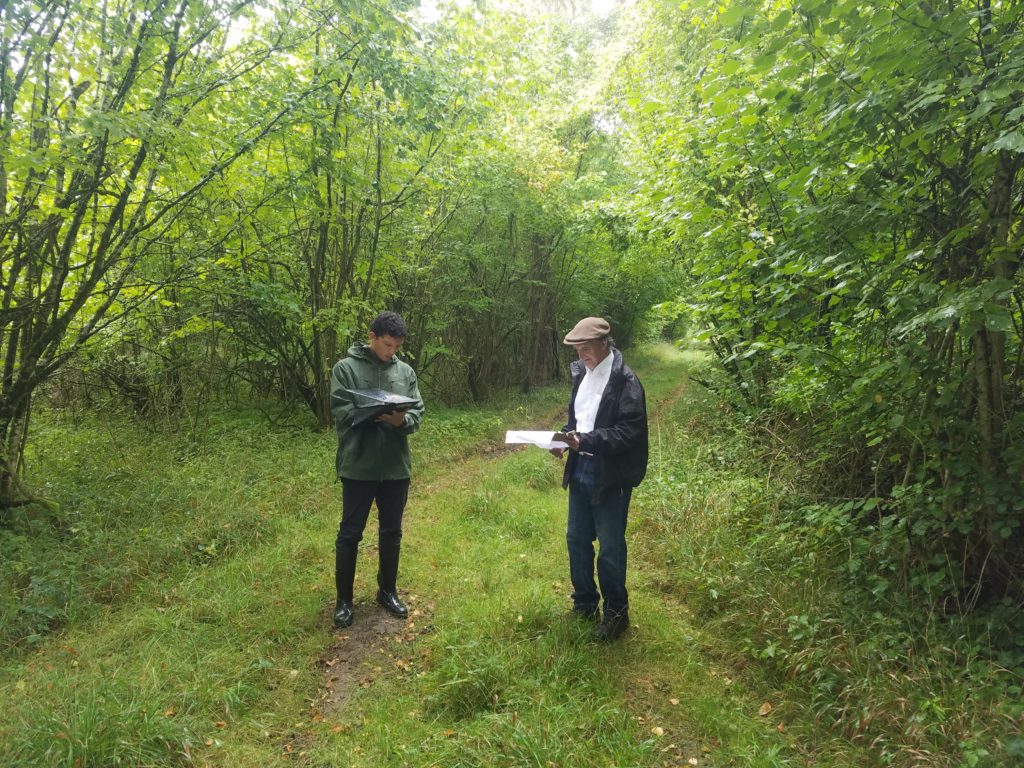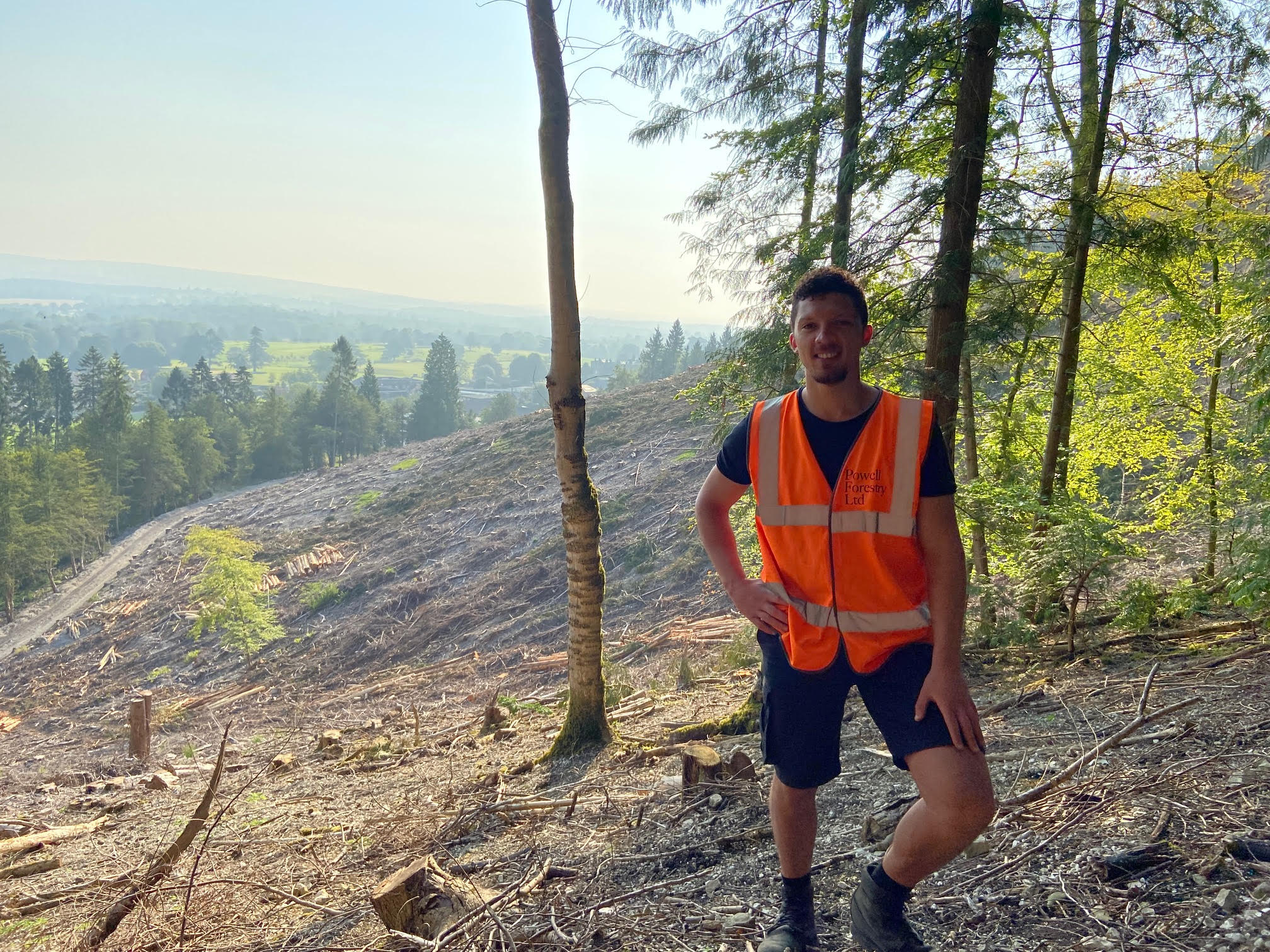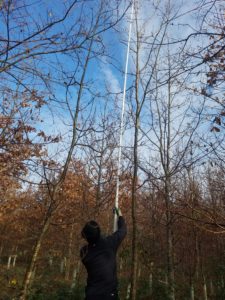James Cryer, Assistant Forest Manager shares a year in review during the Patsy Wood Scholarship in partnership with Future Trees Trust and Royal Forestry Society.
What is the Patsy Wood Scholarship?
The Patsy Wood Scholarship is a position run through the Future Trees Trust (FTT), broadleaf improvement charity in collaboration with W M Hamer (Forestry Consultant) and the Royal Forestry Society (RFS). The position offers a budding young forester the opportunity for initial employment as an Assistant Forest Manager, under the instruction of an experienced mentor – William Hamer. In addition, the candidate is encouraged to take part in various training opportunities within UK forestry including both RFS and external training courses, alongside helping with the important research undertaken by the FTT. This year’s Patsy Wood Scholar (2020-21) was James Cryer, a former graduate from the MSc Environmental and Forest Management at the University of Aberdeen.
James Cryer:
Why it was a golden opportunity
This past year as Patsy Wood Scholar has been a golden opportunity for me. Firstly, the role has allowed for one-to-one tuition with William throughout the course of the whole forestry year. Such mentorship has many obvious benefits, and his knowledge surrounding lowland silviculture, forest management, business and general countryside topics has meant no question has gone unanswered. I have also been fortunate enough to spend time with Dr Jo Clark and partake in research on forest genetic resources, an aspect that has certainly instilled the importance of knowing the origin of my planting stock.
Due to the emphasis on learning and development, the scholarship has given me ample time to explore my wider interests surrounding forestry. This has resulted in me signing up for a variety of courses, regularly attending seminars, exploring applied literature and gaining extra work experience.
Perhaps one of the most valuable aspects of the scholarship has been the opportunity to make contacts. Attending RFS meetings, site visits, courses and consultations has exposed me to a wide range of skilled and notable figures within the industry. Engaging in conversation with many clients, contractors, land managers and merchants has taught me a great deal!
Having such a multifaceted approach to learning can only be beneficial, and overall has given me a well-rounded introduction to the wider UK forestry scene.
Main day-to-day roles
– Woodland Management Plans & Five-year reviews
– Surveying (e.g. crop inventories, beat-up surveys, planning for operations etc.)
– Stock measurements (e.g. timber, firewood, chip)
– Stand measurements (e.g. felling licences, volume estimation, yield class)
– Marking thinnings (e.g. selective felling, stand improvement, multi-purpose forestry)
– Consultation (e.g. client liaison, contractors, statutory bodies)
– Planting (e.g. planning, stock takes, dispatch)
– Grant applications (e.g. RLE1, WCM etc.)
– Marking out woodland creation sites
– Felling licences
– GIS
Best aspects
In general, my favourite day-to-day aspects have included forest mensuration, surveys and marking thinnings. Taking stand measurements has a wide variety of useful applications, such as estimating the volume of timber present, determining if the stand is ready for thinning or how it is performing over time (e.g. yield class). Mensuration is also necessary for the application of felling licenses, which require an estimation of the volume to be removed in a thinning or clear-fell operation.
Surveys serve as the foundation for a Woodland Management Plan, which involve gathering information on the crop types, condition and silvicultural potential of the forest. This information is then carefully considered under the context of the management objectives, as well as other factors such as designations, environment, history and access. Much of my role has incorporated translating the survey information into a selection of possible management prescriptions, as well as producing maps and inventory data tables using GIS systems.
Marking involves the selection of trees for removal, with the majority of marking done prior to a thinning operation. Once a stand is fully established, the thinning cycle begins and depending how far advanced the crop is we may be selecting trees to remove for a number of reasons. Usually, we will be removing the poorest quality trees to give the best trees room to develop. But, sometimes we are selecting individuals of the right quality for a particular market, or we may be opening up the stand to increase light levels which further promotes natural regeneration and stand diversity. Overall, selection is a considered process with a number of factors affecting the decision, including timber quality, spacing, access, structure, diversity, markets, thinning intensity and potential for growth.
 James Cryer (left) with William Hamer (right)
James Cryer (left) with William Hamer (right)
Royal Forestry Society (RFS) & William Hamer
I feel very fortunate to have had William as both my employer and mentor. One of the great benefits of William’s set up is his involvement with the RFS. Forestry in the UK is a relatively small world, and making contacts is an invaluable aspect of the job. As chairman of the Southern Division, he is a well-respected member and has a wide range of contacts within the local industry. This was evident when I had a chance to network at my first RFS meeting, alongside the tour William and I held of the beautiful Herriard Estate which he manages.
As part of the scholarship, I was entitled to three courses run by the RFS – opting for An Introduction to Soil Identification for Foresters, Pruning for Quality Timber and Intermediate Silviculture. Intermediate Silviculture offered a chance to delve into the silvicultural practices commonly used following the establishment phase. It was fantastic to learn from Dr Julian Evans and Dr Gary Kerr, whose work I had become familiar reading during my time at university.
In addition, William very generously sent me on the well-regarded course SelectFor: Irregular Silviculture in the Lowlands, which covered the application of continuous cover forest management. Seeing the use of irregular silviculture-type management in some of the properties managed by William and others has been very interesting and certainly sparked my interest. It seems clear that where feasible, such approaches offer a much more environmentally-friendly alternative to traditional systems.
Following my final day as Assistant Forest Manager, I also attended the Woodland to Workshop course run by Woodland Heritage. This course nicely encapsulated much of what I had learned working with William, as well as an in-depth look at what happens to the timber once it enters the sawmill. For example, the potential measurements, processes, treatments, grades and timber products made thereafter. This aspect of the industry is still very new to me, so it was great to share the course with others who hold expertise in these fields.
A more recent partnership of William’s practice has been with English Woodlands. Tom Compton, the managing director of both their forestry and sawmill business streams, kindly invited me to gain some work experience with them for a week. This involved everything from helping with the grading and categorizing of hardwoods, to site visits with harvesting and ground preparation contractors – on a very operationally challenging, but scenic harvesting site along the South Downs Way.
I am also very grateful to Dr Jo Clark and Dr Beesley for letting me join in on their important work with the Future Trees Trust. Throughout the year I have helped gather data on oak and sycamore progeny trials, assess the severity of dieback on young trees for the Living Ash Project and select birch plus trees. Overall, this insight has bought home the importance of establishing improved hardwood planting stock that will boost productivity, as well as the need for foresters to consider the role of genetic diversity when undertaking new woodland creation projects. With the ever present effects of climate change and the resulting introduction of new pests and diseases, this aspect will be fundamental to ensuring we are creating diverse and resilient woodlands from the outset.
What I am doing now
Having finished my year as Patsy Wood Scholar, I am now working in Dumfries & Galloway as an Assistant Forest Manager for Tilhill. The role is predominantly focused on commercial upland forestry and encompasses a different set of silvicultural and management practices. Despite the stark contrast to the scale and operations of lowland forestry in Southern England, the scholarship has equally given me plenty of parallels and experiences of which to draw on in my next endeavour. I am looking forward to the new challenges and opportunities that will present themselves up in Bonnie Scotland!
The Patsy Wood Foundation provides an excellent pathway for future British foresters following the graduation of their formal forestry training. I feel very privileged to have been selected as this year’s scholar. Through more ways than one, my year with William and the Future Trees Trust has provided the foundation for what I hope will be a long and productive forestry career. The structure of the scholarship has allowed me to pursue my interests, as well as developing a resource of contacts, knowledge and experience. Suffice to say I will miss working with William, but I am looking forward to, and feel well-equipped for my next venture.
Sign up to our newsletter for updates on the 2022 scholarship opportunity.



Leave A Comment